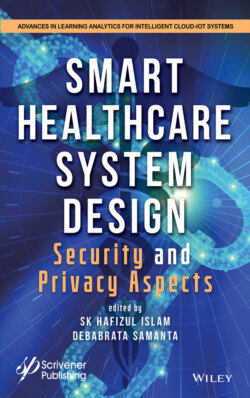Читать книгу Smart Healthcare System Design - Группа авторов - Страница 47
2.4.3 An Issue With the Tele-Medication
ОглавлениеMonitoring and mobility of ambulatory patients can cause of late delivery of tele-medication at a patient location. In the case of any abnormality, the tele-medication has to reach the location at the right time. This tele-medication is mostly sent by the associated doctor, who is monitoring the patient. If the distance of the doctor and patient is too far from each other then it can cause the critical condition of the patient. Therefore, tele-medication is very important to reach the patient location but is still an issue in cardiac patient monitoring for smart health. The research community has done work related to the mortality rate due to issue with the tele-medication. In the study of [36] it mentioned that the mortality rate is quite high after some surgical treatment in patients due to unreachability of tele-medication services at the patient’s end. The rate of mortality rose from 7–9.5% due to this issue. In another study [35] reported that due to less effective services of tele-medication to mobile patients the rate of mortality becomes high. After the treatment patients can get a short-term indicative improvement in their health. But after the discharge from the hospital, the death rate becomes high within the first year due to unreachable tele-medication services, less qualitative monitoring, and readmission of patients in the case of any abnormality. In certain instances, the death rate and readmission are very high as the ‘vulnerable stage’ is called the 1st months after hospitalization to recognize hospitalization. The danger of death and readmission is usually evident during the 1–3 months following the release of the crisis center, with the highest rates occurring in the initial 30 days. Information from the US ADHERE library, considering 104,808 patients hospitalized inferable from HF, tended to have 11.2% mortality data and a 22.1% readmission rate on Day 30 after release. Some 35–40% of patients will either send or be readmitted to an emergency clinic during the baseline 3 months after discharge. In the primary year after hospitalization for HF, syphon dissatisfaction and sudden cardiovascular passing are the most normal purposes behind death. The general photo, as Figure 2.2 below, expresses that situation.
This study also examined the death rate of outpatients due to less intelligent tele-medication services offered. The study stated that the visits of patients after the treatment were good after the post-discharge, but steadily decreased as days passed. Therefore, ambulatory patients need a smart tele-medication definition to track and take appropriate action when any abnormality occurs. As shown in the figure below the median period from entry to an initial portion of the sample was 7 days in the pre-release collection and 10 days in the post-release collection. In separate pre-release and post-release meetings, the median period from randomization to the primary component was 0 days [interquartile run (IQR) 0–1 days] and 3 days (IQR 2–6 days). In the pre-release gathering (IQR −2 to −1 days) and 1 day in the post-release gathering (IQR 1–4 days), the median time from release to the main component was −1 day as illustrated in Figure 2.3.
Figure 2.2 Structure of transformation research. Visits to the study occur at 2, 4, 6, 8, and 10 weeks and 14, 18, 22, and 26 weeks after randomization (or at the time of early treatment or suspension of the study) [35]. ACEI, angiotensin-changing chemical inhibitor; ADHF, extreme decompensated cardiovascular failure; ARB, angiotensin receptor blocker; HFrEF, reduced discharge cardiovascular failure; OMT, advanced medical clinical treatment; Sac/Val, sacubitril/valsartan [49].
Figure 2.3 The no. of patients visits after Post Discharge [36].
